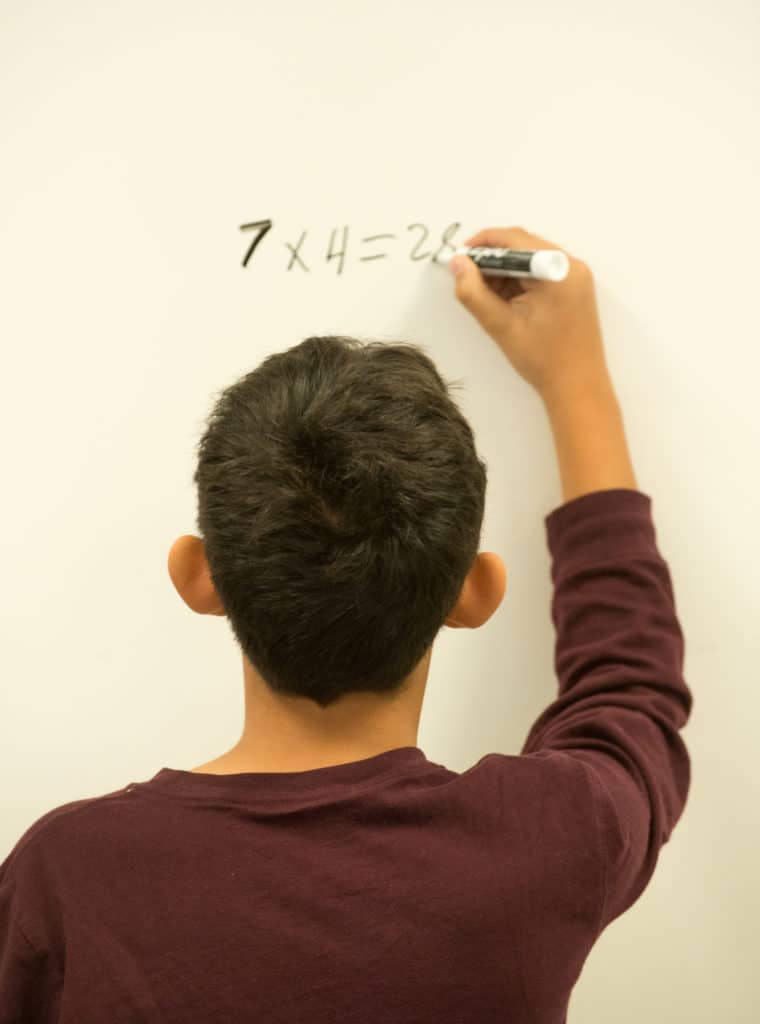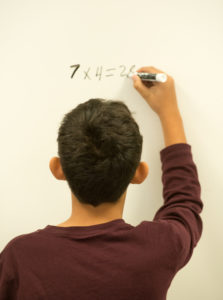

When it comes to math, the homework burden can be especially heavy. Math success once depended upon rote memorization and mastery of simple algorithms. Now, however, children must be adept at analytical thinking, problem solving, and mathematical communication. Add to that the frequent changes in math curricula typical in many school districts and it’s easy to see why math homework can confuse children, trouble teachers, and leave parents feeling incompetent at helping their children learn.
After struggling with this problem, I began devising math homework that reached school district math goals by way of children’s communities—the things they see and do in their neighborhoods every day. The concreteness and relevancy of these “neighborhood math” problems encouraged the children to pay attention to their surroundings and made homework easier and more enjoyable for them to do—and for parents to help with or check. Plus, the insights into the children’s daily lives that I gleaned from this kind of homework helped me know them better and teach them more effectively.
Here are some examples of the kinds of problems that helped connect math and daily life for my students. You’ll want to devise your own problems to suit your students’ neighborhoods, their developmental stage and skill levels, your curriculum goals, and the availability of parents or others to help with homework.
. . . kindergarten: Counting and sorting; set making; simple addition and subtraction using real materials; graphing; simple equations; exploring size, shape, length, and volume; using paper and pencil to record number work.
. . . first grade: Work with and without manipulatives; basic computation with money; reversing operations (plus and minus); measuring.
. . . second grade: Computation with money; time; more complex mental math; equation solving; fractions through measurement, weighing, comparing; symmetry and other simple geometry; simple computation with multiplication and division based on experience with concrete materials; games for skills practice.
. . . third grade: Problem solving using all four operations; fractions through measurement, weighing, and some pencil and paper tasks; borrowing and carrying; geometric patterns constructed with pencil and paper; games for skills practice.
. . . fourth grade: Division, extensive experience with word problems; computation with money; beginning work with decimals; practice with multiplication tables.
. . . fifth grade: Mastery of multiplication tables; extensive work with decimals; extensive computation with fractions; measurement; measurement computation with maps; double-digit division.
. . . sixth grade: Complicated word problems; probability and statistics through real problems; use of calculator and computer; computation for speed and accuracy; percentage.
Homework is a reality of school life. But there are other important realities: students bored with assignments unconnected to their daily lives, parents who find it hard to help with homework based on unfamiliar approaches, and teachers struggling to find workable ways to know their students better. We can’t make homework go away, but we can make it more relevant, enjoyable, and accessible. Math homework based on children’s surroundings is one way to knit together math success and family life, using the community as the yarn.
Gail Zimmerman recently retired after thirty-four years as a classroom teacher (second, third, and fourth grades), reading specialist, and literacy coach at James Curley and Jackson Mann Elementary Schools in Boston, Massachusetts. Gail is a certified Responsive Classroom consulting teacher.